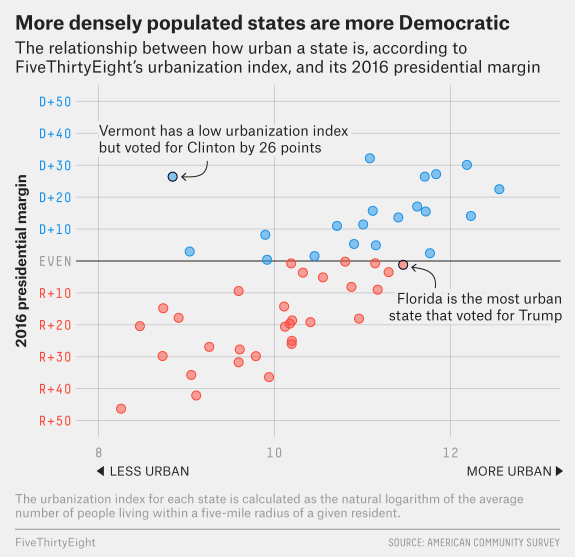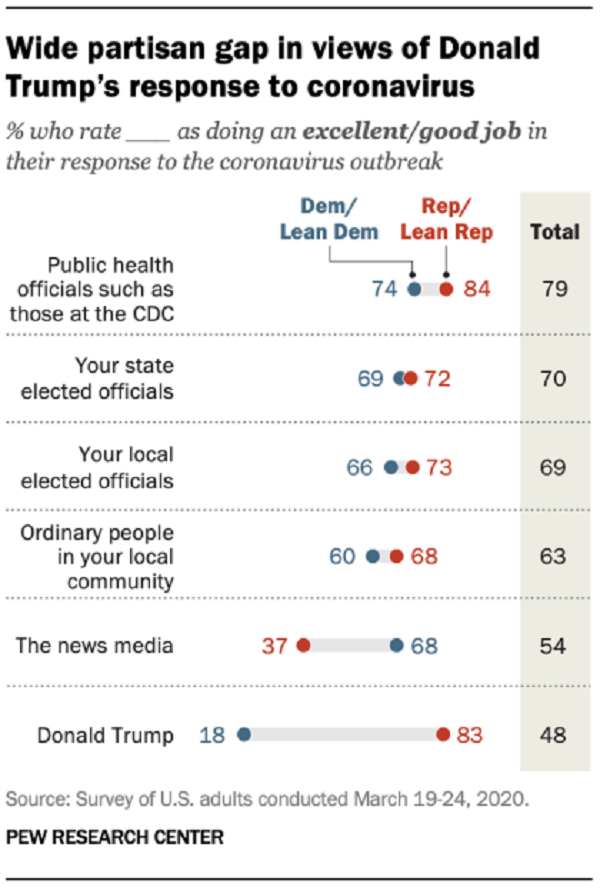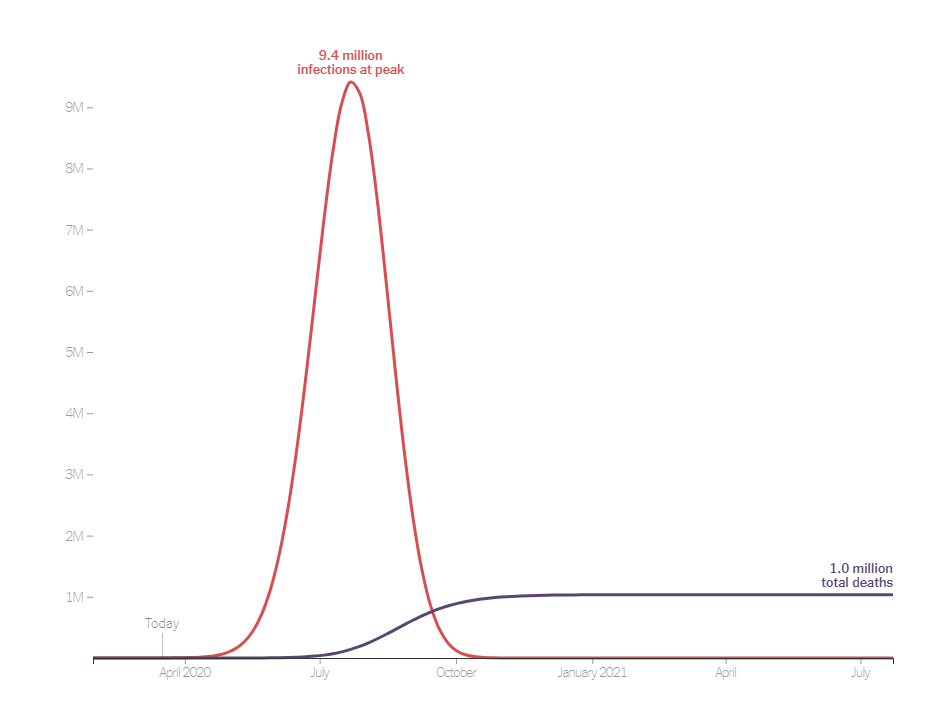FiveThirtyEight has the interesting graph copied here from their article How Urban or Rural is Your State? And What Does That Mean For The 2020 Election? by Nathaniel Rakich (4/14/2020). How did they measure urbanization?
Essentially, we calculated the average number of people living within a five-mile radius of every census tract and took the natural logarithm to create an “urbanization index,” or a calculation of how urban or rural a given area is.
The article has a table of data that goes with the graph and they look at the 2020 election if urbanization dictated the outcome.






 No, as can be easily seen by the graphic here copied from the NASA article
No, as can be easily seen by the graphic here copied from the NASA article 

